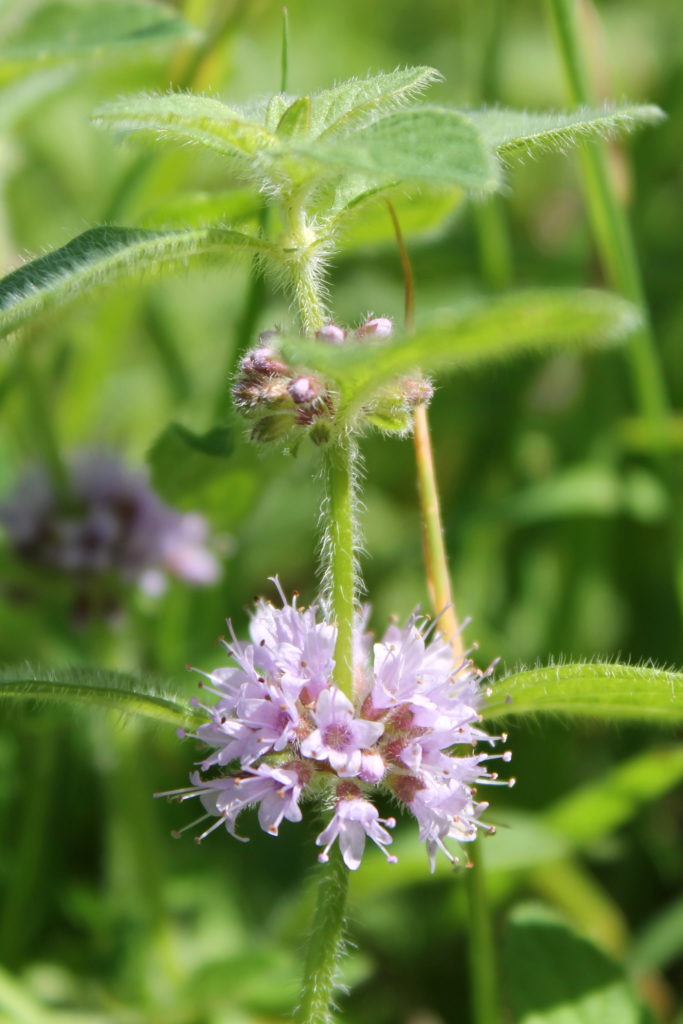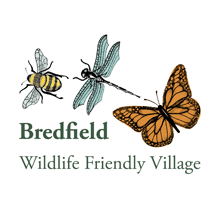Herbs are an important element of wildlife gardening and this is especially true for mint. Mint is great for bees, hoverflies and some butterflies, and you’ll find lots of culinary uses for it too: herbal tea, mint sauce, salad ingredient, and spicing up those boiled potatoes. The only problem with mint is that it is a spreader. Unless you want it to take over your garden, plant it in a large pot or in a container placed in the ground. Pots of herbs look great in the garden, and Marjoram and Thyme are also great for bees and butterflies.
There are lots of varieties of mint in Britain: Apple, Spear, Pepper and about 12 others. Many culinary mints are hybrids. Why not have two or three pots with different types in each? Two popular varieties are Apple Mint and Black Peppermint, both widely available cultivated hybrids.
Mint will prove a magnet for bees and butterflies. The plant will be mainly attractive to insects once it has flowered. So, what is required, is not to pick off and discard the flowers. It’s the nectar from the flowers that the bees and butterflies need.
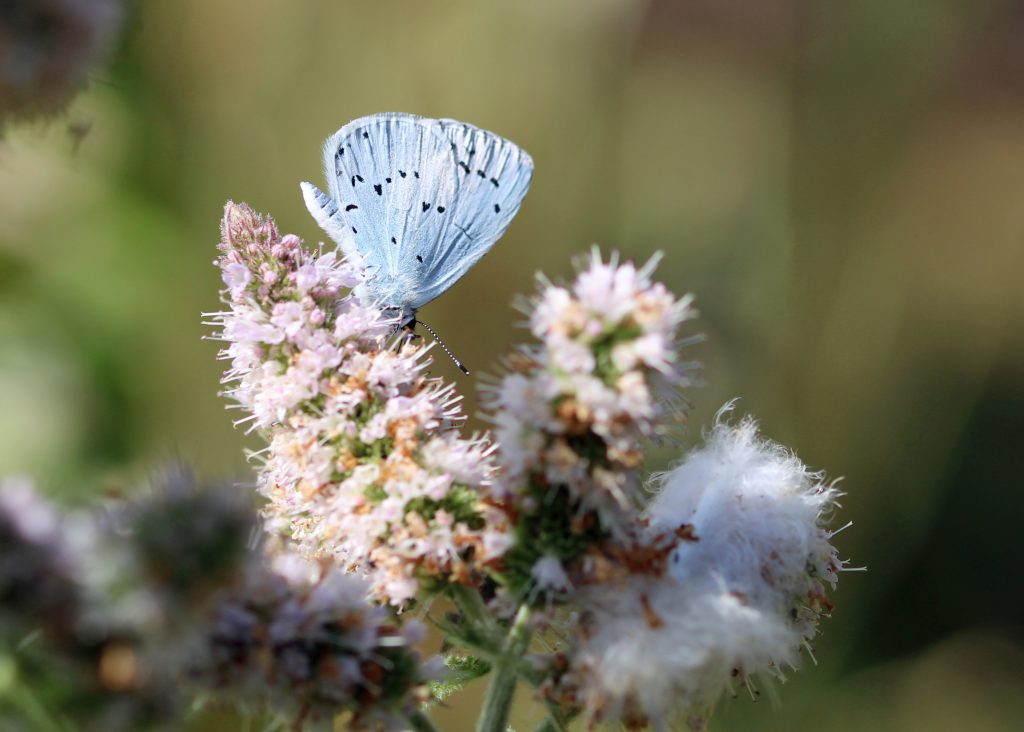
Holly Blue butterfly on the day shift 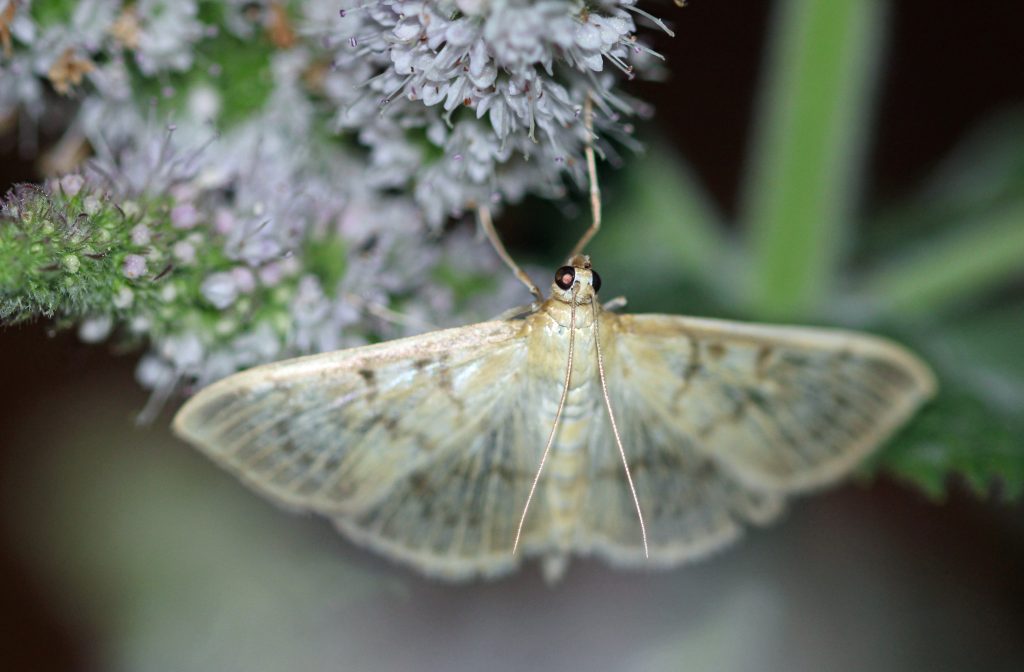
Mother-of-Pearl moth on the night shift
At any stage in it’s growth, you will find that your Mint plant attracts the beautiful little Mint Moth.
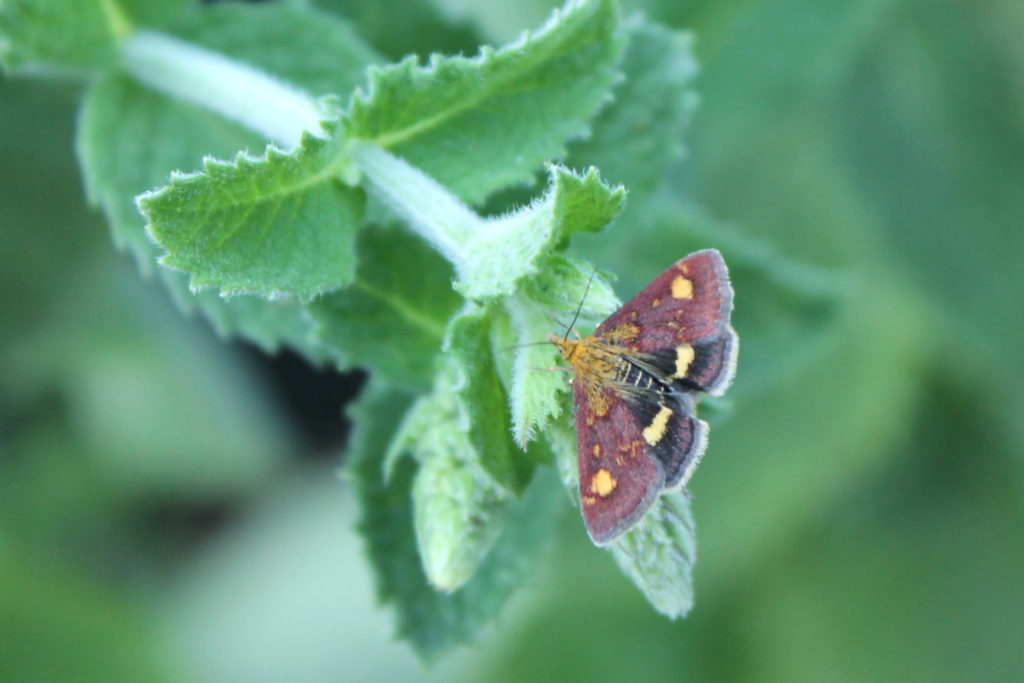
Late in the summer, you may find that your Mint leaves develop mildew. This looks rather unsightly, but ladybird larvae can feed and thrive on plant mildew. So, it might be helpful to leave a few mildewed leaves for a while. This picture is of a 22-spot Ladybird larva feeding on mint mildew in early September. (Remember that ladybirds are a gardener’s friend!)
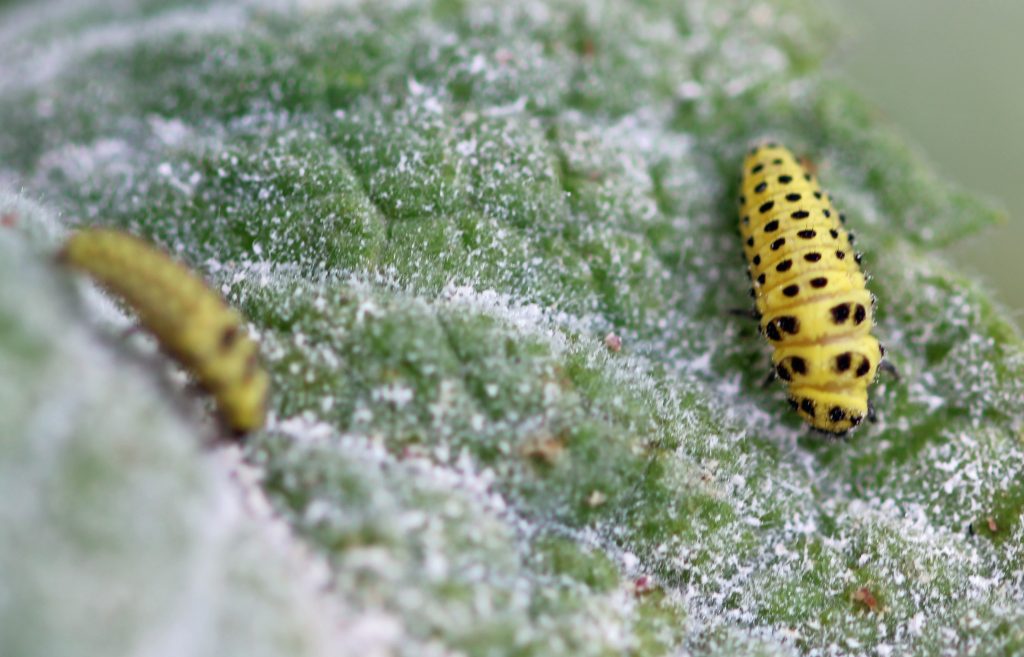
In Bredfield Jubilee Meadow and Orchard, you will find another species of wild mint – Corn Mint. It’s popular with insects, but probably won’t be popular with you, if you try to taste it. It’s quite bitter!
